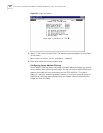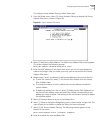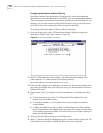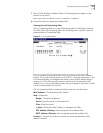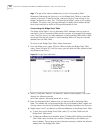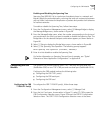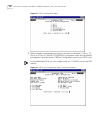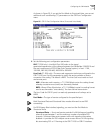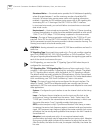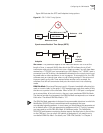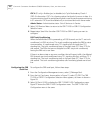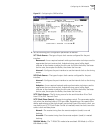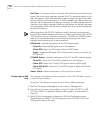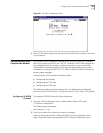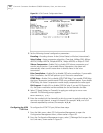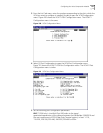
124 CHAPTER 4: CONFIGURING PATHBUILDER S330/S310 MODULES, PORTS, AND APPLICATIONS
Structured Voice — Structured service provides N x 64 kbit/second capability,
where N ranges between 1 and the maximum number of available DS0
channels. Structured voice service passes traffic with signaling information
enabled—it provides for DS0 midspan carrier access with A & B signaling bits
terminating DS1 or E1 framing at the CBR T1-DSX or CBR E1 interface.
In structured voice mode, you can build either structured voice or structured
data virtual circuits.
Unstructured — Unstructured service provides T1-DSX or E1 frame tunneling;
it allows the application to utilize the entire available bandwidth at a bit rate of
1.544 (T1) or 2 (E1) Mbps. T1-DSX framing is optional in this service mode.
Framing—The type of frame organization configured for the T1-DSX or E1 port
interface: D4 or ESF for the CBR T1-DSX module; G.704 for the CBR E1 module.
Set this parameter to match the service provider or device connection framing. The
Framing must match at local and remote ports.
CAUTION: A framing mismatch can cause LOF, OOF alarm conditions and result in
traffic loss.
TC Signaling Type (Structured Voice mode only)—The trunk condition signaling
type: PLAR, E&M/PLAR, FXS, FXO, FXS-GroundStart, or FXO-GroundStart. This is
the type of signaling done between PBXs. This also sets the signaling type used for
each of the virtual circuits across this port.
For PRI signaling, you must set the TC Signaling Type to PLAR when the port is
configured for structured voice.
TC1 Signaling Bits / TC2 Signaling Bits (Structured Voice mode only)—Trunk
condition 1 and trunk condition 2 signaling bits: onhook or offhook. The default
for TC1 Signaling Bits is onhook, while the default for TC2 Signaling is offhook.
The default values are usually suitable for PBX applications, but for channel bank
applications you should set TC2 Signaling Bits to onhook. For further details about
trunk conditioning, see “DS0 Trunk Conditioning” later in this section.
Timing—The type of input clock service configured for the port interface. The
default is System. The SRTS and Adaptive options are normally used for voice
applications—SRTS for unstructured voice applications and Adaptive for structured
voice applications.
System—Configures the port interface to use the internal clock as the timing
source.
Loop—Configures the port interface to use the input port Rx clock as the
timing source; timing is received from the service “loop.” Select Loop if the
T1-DSX port is used for the network/carrier service termination, in which case
the carrier (the service “loop”) typically provides the timing source.
SRTS (unstructured ports only)—Synchronous Residual Time Stamp; a means
to measure the service clock frequency against a network-wide synchronization
signal. SRTS measures input frequency against the master network clock source
and adjusts the line rate by sending residual time stamps in the AAL1 header to
the remote end.
Adaptive (unstructured ports only)—A non-required network-wide
synchronization technique used to regenerate the input service clock. Adaptive
timing uses a buffer depth indicator at the receiver to adjust the line rate: the
fuller the buffer, the faster the line rate; the emptier the buffer, the slower the
line rate.



